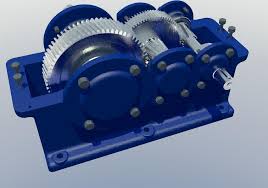Mobile:+86-311-808-126-83
Email:info@ydcastings.com
Italian
Design and Functionality of Submersible Pump Casings in Various Applications
Understanding Submersible Pump Casings Key Features and Importance
Submersible pumps are widely used in various applications, primarily for groundwater extraction, drainage, and sewage management. One of the essential components of these pumps is the casing, which plays a pivotal role in their operational efficiency and longevity. In this article, we will delve into the significance of submersible pump casings, their key features, and the materials used in their construction.
The casing of a submersible pump is designed to house the motor and impeller, facilitating the safe and efficient pumping of fluids from below the water surface. Unlike surface pumps, submersible pumps are installed underwater, which necessitates a robust construction to withstand the external water pressure while preventing the ingress of water into the motor compartment. This characteristic makes the casing a critical element in maintaining the integrity and functionality of the pump system.
One of the primary materials used in the construction of submersible pump casings is stainless steel. This material offers excellent corrosion resistance, making it ideal for applications in harsh environments, such as sewage and industrial wastewater systems. Additionally, stainless steel is durable, ensuring that the casing can withstand the mechanical stresses associated with continuous operation.
submersible pump casing

Another commonly used material is thermoplastic, particularly in smaller or less demanding applications. Thermoplastics are lightweight and easy to mold, enabling manufacturers to create complex shapes that optimize the flow of fluids within the pump. However, while thermoplastics provide certain advantages, they may not be suitable for high-temperature or corrosive environments.
The design of the casing also impacts the pump’s hydraulic performance. A well-engineered casing will ensure optimal fluid dynamics, reducing turbulence and maximizing efficiency. Features such as streamlined internal surfaces and strategically placed intake and discharge ports are essential for enhancing the overall performance of the submersible pump.
Furthermore, the casing must be designed with proper sealing mechanisms to prevent leaks and ensure long-term reliability. O-rings, gaskets, and other sealing methods are commonly used to protect the motor from moisture, thus extending the lifespan of the pump.
In conclusion, the submersible pump casing is a critical component that contributes significantly to the pump's performance, efficiency, and durability. Understanding its design and material considerations is vital for anyone involved in the selection, installation, or maintenance of submersible pumps. As technology progresses, we can expect advancements in casing designs and materials, further enhancing the efficiency and reliability of these indispensable pumping systems.











